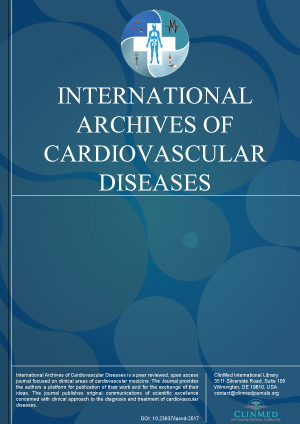Archive
Open Access DOI:10.23937/2643-3966/1710060
Volkan Camkiran, MD, Ozge Ozden, MD and Ilyas Atar
Article Type: Original Article | First Published: 2023/10/30
Article Formats
- Full Article
- XML
- EPub Reader
Open Access DOI:10.23937/2643-3966/1710059
Erin Hanft, Elena Abascal, Anne Ferris and Elvira Parravicini
Article Type: Original Article | First Published: 2023/10/22
Article Formats
- Full Article
- XML
- EPub Reader
Open Access DOI:10.23937/2643-3966/1710058
Charles Croughan, MD, Balaj Rai, MD, Zachary Gilbert, MD, William David Nickell PA-C, Nathaniel Dittoe, MD, Brian Schwartz, MD and Peter Pavlina, MD
Article Type: Case Report | First Published: 2023/09/11
Article Formats
- Full Article
- XML
- EPub Reader
Open Access DOI:10.23937/2643-3966/1710057
Hypertrophic Cardiomyopathy? Think Again, PRKAG2 Syndrome
Juan Linares, MD, Charles Croughan, MD, Damian Valencia, MD, Rehan Ahmed, MD and Vaskar Mukerji, MD
Article Type: Case Report | First Published: 2023/09/10
Article Formats
- Full Article
- XML
- EPub Reader
Open Access DOI:10.23937/2643-3966/1710055
Agata Sularz, MB BChir MA(Cantab.), Hashrul Rashid, MBBS(Hons), PhD, Jane Hancock, MB ChBPhD, Nikolaos Papamichael, MD, PhD, Bernard Prendergast, BMBS, DM, Simon Redwood, MBBS, MD and Tiffany Patterson, MBBS, BSc, PhD
Article Type: Case Report | First Published: 2023/05/13
Article Formats
- Full Article
- XML
- EPub Reader
Open Access DOI:10.23937/2643-3966/1710054
Cardiovascular Disease as a Chronic Sequel to COVID-19: A Case Report
Oscar Rene Vazquez Melo, Ramon Eduardo Garcia Cahuich, Jose Julián Sosa Rodriguez and María Valeria Jiménez Báez
Article Type: Case Report | First Published: January 26, 2023
Article Formats
- Full Article
- XML
- EPub Reader

Volume 7
Issue 1
Issue 1
